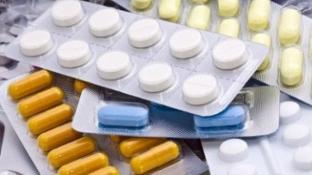There are special valves in the veins that act as a kind of closure, preventing blood flow down (venous blood in the leg flows from the bottom up).
Valve system failure leads to reflux and blood clots.As a result of these processes, the veins weaken, stretch and deform, unable to cope with the rising blood pressure.
The result of this is a well-known symptom for many - swollen veins on the surface of the skin, which indicates the dynamic development of the pathology.
The whole insidiousness of the disease lies in the fact that in the initial stages it appears as fatigue of the usual heaviness in the legs.
Therefore, many of them do not rush to visit a doctor and they start to sound the alarm when the blue strands become visible on the skin, spoiling the appearance of the feet.
Learn more about early varicose vein symptoms here.
The reasons for the development of this pathology are very different.These include congenital anomalies of the vascular system and some provocative factors: a sedentary lifestyle, being overweight, uncomfortable shoes, occupational activities associated with prolonged standing.
Treatment of the disease is always carried out in a comprehensive manner.The necessary scheme is chosen by a specialist based on the stage of development of the disease and the individual characteristics of the organism.
Which doctor treats veins?

Varicose veins are not only varicose veins, but also serious valvular disorders and a failure of blood circulation, which leads to serious complications throughout the body. And if the first symptoms appear - swelling of the veins, muscle cramps, constant heaviness in the legs - you should immediately make an appointment with a phlebologist.
Based on the severity of the case, the causes of the disease and the state of health, the doctor will choose the most appropriate course of treatment from the options available today.
Symptoms of Threat
The main reasons that lead to varicose veins are: heredity, overweight, sedentary life, sedentary or standing work, hormonal imbalance in the body. According to statistics, 40% of adult women and 20% of men have signs of varicose veins.
A phlebologist is engaged in diagnosing the disease, you should contact himif such symptoms occur:
- Weight on foot that gets worse at the end of the day.
- Rapid leg fatigue during long walks.
- Leg pain.
- Appearance of a fine vascular network in the foot.
- swelling of the feet.
- Convulsions that increase in intensity at night.
- Itching of the skin of the lower extremities.
atrophy of the superficial venous muscle fibersdevelops gradually, blood vessels dilate, dilate, become twisted, nodules appear on them that protrude above the surface of the skin. The skin over the varicose veins becomes bluish, dry and hot, ulcers appear due to tissue malnutrition.
Due to dystrophic changes in the subcutaneous fat layer, lipodermatosclerosis can develop - a dangerous complication of varicose veins in the legs, the treatment of which with conservative methods may be unsuccessful.
To avoid the severe consequences of varicose veins, phlebologists advise their patientsto start treatment on timewhen the first signs of the disease appear.
Treatment methods
Sclerosis is very effective, which consists of injecting a special sclerosing substance into the container using a syringe with a better needle. The venous lumens are constricted, the ends of the ruptures are joined, stopping blood flow out of the vessels. The substance itself, having fulfilled its function, is absorbed.
This method removes all stains and gives an excellent cosmetic result. But after the procedure, it is necessary to maintain the condition of the veins with additional therapy and wear compression garments.
Almost 10 years ago, a laser, or rather endovenous laser coagulation, began to be used very successfully in medicine to fight varicose veins. Treat the veins as follows:
- Using local anesthesia, a small hole is made in a vein.
- An optical fiber is inserted into the resulting hole.
- The laser acts on the damaged areas, sealing the damage.
- Then a new fabric appears in the locked space.
The operation does not take place "blindly" - the process is monitored by an ultrasound machine, so there is virtually no risk of failure. In addition, the absence of significant incisions excludes painful sensations, hemorrhage formation, and violation of adjacent tissue.
After the procedure, you should bandage the affected areas or wear compression stockings and tights.
Radiofrequency ablation is often used and high frequency current is successfully treating varicose veins. It happens as follows:
- The vein is punctured.
- A catheter is inserted into the hole.
- Radiation enters the container through it.
- The conductor acts at the molecular level, altering the protein molecules of the damaged vein.
The method allows you to quickly treat all venous nodes and does not require any special postoperative therapy.
Methods for treating varicose veins
There are two of them: conservative and surgical. The patient faces an urgent question: how to treat varicose veins in the leg without surgery. When choosing a method, the doctor takes into account the signs, the stage of the disease, the presence of complications, concomitant diseases, the age of the patient. Non-surgical methods for the elimination of varicose veins of the lower extremities give good results only when the symptoms of the pathology are still weak.
To stop the degradation of affected ships help:
- drug therapy;
- compression treatment;
- physiotherapy exercises;
- physiotherapy;
- massage;
- prescriptions of traditional medicine;
- diet.
Phlebologists try to choose exclusively non-medicinal treatments for patients with varicose veins of the lower extremities during pregnancy. First of all, these are compression underwear, gymnastic exercises, physiotherapy, massage, diet. If medicines are still needed, only medicines for external use are prescribed.

The debate continues over whether hirudotherapy helps with varicose veins. Hirudin produced by caterpillars, penetrating the venous system of the lower extremities, dilutes the thick blood. However, today there are many modern medicines with the same property. In addition, there are risk factors for the use of caterpillars - vascular infection, allergic reactions.
If necessary, the treatment of varicose veins is performed using radical methods. This:
- scleotherapy;
- ozone therapy;
- cryotherapy;
- electrocoagulation;
- laser coagulation;
- surgical intervention.
Scleotherapy - injection into a diseased vein of a medicine that "sticks" to the enlarged vessel. Stops pumping blood and is gradually digested. Maximum effectiveness of sclerotherapy is achieved at an early stage of pathology. A similar method is ozone therapy: a portion of this gas is injected with a syringe into the lumen of the small veins, and the vessels also "stick together. "
Cooling is used during cryotherapy procedures. During electrocoagulation, a high frequency current is supplied to the vessels through a very thin electrode. Laser treatment of varicose veins is also a modern effective method, especially when used in combination with conservative methods. At the same time, the cosmetic result is high: after a few weeks, the patient has no scars or marks.
However, surgical removal is the most effective treatment that allows you to get rid of varicose veins when drug therapy does not lead to the desired result. Diseased vessels are removed through local subcutaneous incisions. After surgery, the foot is tightly tied, and after three to four hours the patient can walk.
Principles of medical treatment of varicose veins
Effective treatment of varicose veins is possible only if the selected drugs prevent the mechanisms of development of pathology, destruction of blood vessel walls and valves.
The main tasks of medical treatment of varicose veins are:

- restoring blood circulation;
- strengthening of the venous walls;
- increase in vascular tone;
- decrease in blood viscosity;
- prevention of blood clots;
- normalization of the valve system;
- elimination of inflammatory processes;
- normalization of blood circulation in the capillaries.
Medications are essential in the complex treatment of the disease.
They are also widely used for preventive purposes, which is especially important for people at risk of developing pathology.
To date, there are a large number of drugs for the treatment of varicose veins in the legs and all differ in composition and mechanism of action.
See a doctor
Varicose veins are a serious disease, which, if treated incorrectly or not, can threaten various complications that are dangerous to human health and life.
Help. Vital thromboembolism, thrombophlebitis, trophic ulcers - this is not a complete list of varicose vein complications that pose a threat to humans.
In this regard, you should not even try to treat yourself.
Experiments at home with medication selection can make the situation worse or ineffective.
In any case, this has lost time, health and money.
Therefore, you should contact a phlebologist. Only a specialist will be able to correctly choose the medication and build a treatment regimen in order to get the maximum benefit for the patient.
What medicines are used

The complex treatment of varicose veins consists of using several groups of drugs at the same time:
- Phlebotonics.
- Anticoagulants.
- Anti-inflammatory.
- Fibrinolytics.
Also, to increase the therapeutic effect,means of systemic and local influence are used.
Creams, gels, oilsare used as a topical preparation. When choosing medicines for varicose veins and thrombophlebitis, it should be borne in mind that it is the agentin the form of an oil that has the highest content of active ingredient.
Important!A common contraindication to all local remedies is a violation of skin integrity.
As a rule, such medicines are applied several times a day, and the product should be rubbed with light movements from bottom to top.
Groups of medicines and their effects
In venous varicose veins, medicinal substances are classified according to the type of action intothree main groups:- venotonic or phlebotropic drugs;
- blood-thinning agents (anticoagulants) and drugs that inhibit platelet aggregation (antiplatelet agents);
- anti-inflammatory drugs.
Medical research and practice have proven the effectiveness of phlebotonics developed on the basis of natural flavonoids- diosmin and hesperid. These substances not only protect the venous cells, but stimulate the outflow of lymph and stabilize the work of capillaries. Concomitant administration of combination drugs, in which both flavonoids are present, is particularly effective.

Most often phlebotropic agentstake 2 to 3 months in courses. It is important that the reception coincides with the hot season, when the load on the boat increases due to the high air temperature and the use of large volumes of water. If varicose veins are associated with chronic venous insufficiency, phlebotonics are taken continuously at half the dose.
A patient with a diagnosis of varicose veinsshould receive systematic treatment from the beginningto prevent the development of the disease and reduce the likelihood of complications.
The second task is solved by drugs that dilute the blood (anticoagulants) and improve its flow properties, preventing the formation of thrombotic clots (antiplatelet agents).
The formation of blood clots, their separation from the vascular wall and movement along the venous bed leads to the overlap of the vessels of the human heart, lungs and brain. As a result, the likelihood of developing a heart attack, pulmonary embolism, and ischemic stroke is very high.
Antiaggregants are not a cure for varicose veins, but are used as a means of preventing its serious complications- thrombosis and thrombophlebitis. We can say that these drugs save the patient's life and reduce the risk of disability to a minimum.
Operation
Removal of damaged veins of the lower extremities or parts of them is performed through incisions or incisions. Elimination of diseased vessels in the clinic is necessary if:
- leg veins are pathologically enlarged;
- skin is affected;
- trophic ulcers appeared;
- thrombophlebitis worsened.
Surgical treatment of varicose veins of the legs is contraindicated:
- for severe hypertension, coronary artery disease, infectious disease, eczema;
- if the patient has already reached old age;
- during pregnancy (over 5 months).
Complementary therapy
In addition to medical and surgical treatment, adjunctive therapy is of considerable importance, including a number of measures to bring the veins back to normal:
- Wrapping has a relaxing effect, removes the feeling of heaviness in the legs. When buying the necessary funds, it is worth remembering that hot wraps are contraindicated for varicose veins.
- Foot baths are another way to help relieve stress on your feet. Using herbs and oils, you can strengthen blood vessels, get rid of bloating and redness. But the effect will be only with daily use of the method.
- Shower with contrast. 10 seconds of cold cleansing and 30 seconds of heat (hot water is best avoided) for 5-7 minutes every morning will help keep your veins in good shape. For these purposes, you can use the shower Alekseev or Charcot.
Phlebologists often include physiotherapy in complex treatment - laser, magnetotherapy, electrophoresis.
They do not cause discomfort and pain, cheap and quite effective. In addition, treatment takes place under the supervision of medical professionals. The main condition is a regular visit to the office.
Physiotherapy has a beneficial effect on the condition of the venous walls, muscle tissue and valve activity.

Compression therapy is an important component not only of treatment but also of prevention and the postoperative period. The use of bandages will avoid stagnant processes, support damaged vessels and stop the progression of the disease.
Applying bandages requires certain knowledge and skills, as excessive pulling can lead to deterioration, and poor bandaging will not give the desired effect. Therefore, for the correct use of bandages, it is worth consulting a doctor.
Massage for varicose veins is not acceptable in all cases, so only a doctor can tell if it is worth using in a particular case or not. If the method is chosen correctly, then after the first session you can feel the result. This method can lead to an improvement in blood microcirculation, relieving the main symptoms of the disease, including external ones.
The more advanced the disease, the harder it is to fight it, and sometimes patients come too late, and then there is only one way out - phlebectomy. To prevent this from happening, you should not wait for complications, but get qualified help on time.
Conservative method
Phlebologists in the treatment of varicose veins try to do without traumatic surgeries that are not necessary in the early stages of the disease. For example, this is typical of veins with reticular varicose veins, the manifestation of which is limited to blue venous networks. The drug helps to improve the condition of valves and vessel walls. Men, like women, should wear compression stockings. The pathology cannot be completely cured. However, conservative methods stop the development of varicose veins and protect against complications.
Gymnastics

Exercise therapy specialists know how to remove leg veins by performing physiotherapy exercises. This is possible provided the exercise, which improves blood flow to the legs, is done systematically. For example:
- In a standing position, the soles of the feet rise strongly alternately.
- In the same standing position, they slowly rise to their toes and descend just as slowly.
- Sitting in a chair, roll a small ball on the floor with your feet back and forth.
Wearing special underwear
Doctors recommend combining medical treatment of varicose veins with compression footwear - these are products made from a special type of knitted fabric that puts pressure (compression) on the veins. The degree of linen pressure in the walls of the vessels can be adjusted by purchasing products with different degrees of compression.
There are a total of four degrees of compression: the first is used for prevention, the rest for treatment. With varicose veins of the lower extremities, wear tights, socks, knee-highs and leggings, the doctor selects the required degree of compression.
Compression underwear creates a dense crushing frame on the foot,thanks to this, such effects develop:
- Weakened leg muscles are supported.
- The walls of blood vessels are compressed, preventing them from stretching.
- Stimulates lymph flow and blood circulation.
- Stagnation is eliminated.
- Venous valve function is normalized.
- The load on the varicose veins decreases.
- Thrombophlebitis is preventable.
It is also mandatory to wear compression stockings after varicose vein surgery. Underwear helps to prevent recurrence of the disease, creates additional support for the body during the rehabilitation period.
Compression sclerotherapy
Compression sclerotherapy is a modern method of treating varicose veins, which consists of injecting medication into the affected veins. As a result, sclerosis (adhesion) of the venous walls occurs, blood flow to the injection site stops, and the vein gradually dissipates or leaves behind a barely visible thread that does not bother the patient at all.
Most often scleotherapy is performed when spider veins appear, when varicose veins are in the initial stage. With the progressive development of varicose veins of the legs, treatment with the method of sclerotherapy is carried out after analyzing the condition of the venous valves and vessel walls, the functional features of the patient's circulatory system.
If a decision is made to perform compression sclerotherapy, the patient undergoes a blood clotting test and a venous ultrasound examination. When performing sclerotherapy, the patient does not experience painful sensations, as the drug is injected into a vein using the thinnest needle. Upon completion of the procedure, a sterile bandage is applied to the medication administration area, the patient wears a compression dressing. For the first week after sclerotherapy, compression stockings should be worn all the time, then it is allowed to remove it overnight.
Positive sclerotherapy results:
- Restore effective blood flow.
- Elimination of blood clots in the damaged vein.
- Prevention of trophic disorders in tissues.
- Elimination of clinical symptoms of varicose veins: edema, crisis, pain.
- Excellent cosmetic effect due to the fact that varicose veins disappear completely.
Diet
For a more effective treatment of varicose veins of the legs, it is important to properly organize nutrition. Berries, apples, citrus fruits, which contain flavonoids, antioxidants, routine, help improve the condition of blood vessels. Blood thinning ensures a daily intake of a sufficient amount of fluid (1. 5-2 liters). The diet with varicose veins in the legs is incompatible with fatty, fried foods, hot spices, alcohol.
Folk remedies
Treating varicose veins with folk remedies at home during the summer is especially effective. The following recipes are popular:
- Foot compresses for 15-20 minutes with tomato paste. It has a high content of lycopene, which actively strengthens blood vessels and prevents the formation of blood clots. At the same time, it is beneficial to eat fresh tomatoes every day.
- Infusion of sweet clover, an essential herb for varicose veins: Art. The raw materials are boiled in two cups of boiling water, kept until cool, filtered. They drink half a glass 3 times a day, the rest of the volume is used as lotions.
What not to do
When diagnosed with varicose veins, you should pay attention to lifestyle, diet and sports.Not allowed:
- active physical activity, running, jumping (yoga classes allowed);
- prolonged posture or prolonged sitting position;
- use of all medicines without consulting a phlebologist;
- long flights with a forced stationary leg position. In addition, at high altitudes, a sharp thickening of the blood occurs, which leads to the formation of blood clots;
- taking a hot bath, visiting a sauna;
- cup and honey massage is strictly forbidden, only manual type of medical massage is allowed.
Possible complications
Trophic ulceris a form of complication in varicose veins, which manifests itself in the development and deepening of a long-term non-healing ulcer. Usually, a special painful ulcer develops in the lower part of the foot, within which "leaks" are often observed in the form of discharge of serious bloody fluid covering the affected tissues.
Urgent medical attention

Immediate medical attention is required if any of the following symptoms occur:
- Increased pain in the affected limb, inability to get out of bed or take a few steps;
- The skin on the feet is hot, swollen and firm to the touch.
- Skin color varies from pale to bluish or bluish red;
- Sudden shortness of breath, shortness of breath, sweating and severe weakness;
- Bleeding from affected skin or varicose veins.
Medications required for varicose veins of the lower extremities should be included in the complex treatment regimen.Even after surgery, several courses of phlebotonic drugs and antiplatelet drugs will be requiredin order to prevent possible trophic disorders, inflammation, and disease-related complications.
Many over-the-counter varicose vein medications work in combination, they have several functions. The effectiveness of such drugs is more pronounced.optimally optimal to use treatment courses in the correct dose, calculated by the phlebologist, in combination with compression therapy, yoga classes, swimming in the pool, herbal medicines.
Conclusion
Complex treatment of varicose veins of the lower extremities involves the use of various therapeutic methods.
Along with medicines, physiotherapy, special exercises, massage, etc. are prescribed.




































